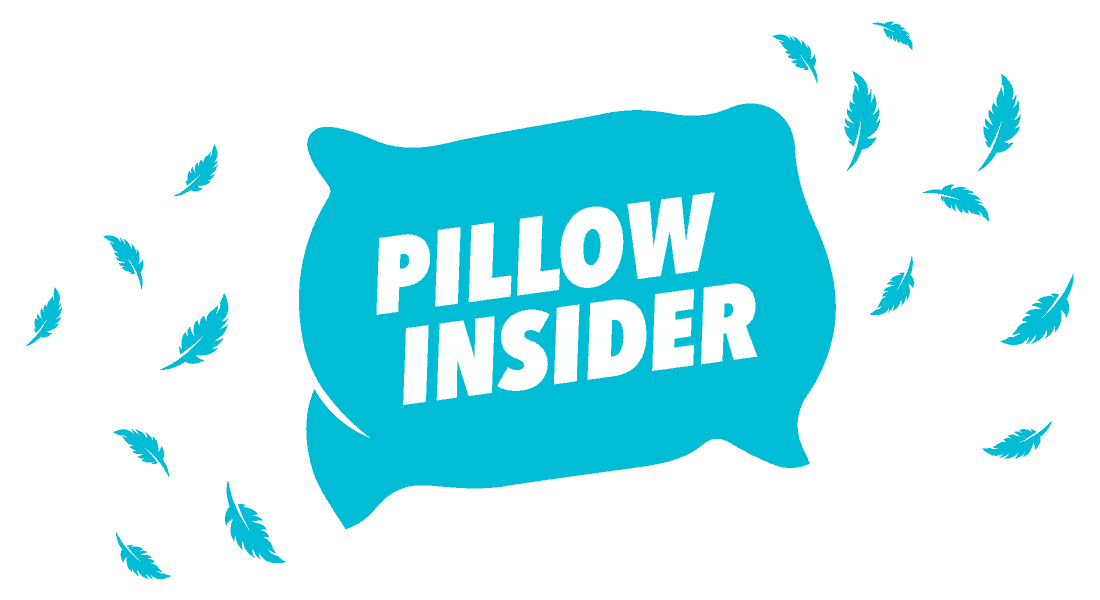The type of pillow stuffing material you choose has a direct impact on your quality of sleep and overall wellness.
Healthy sleeping habits have for long been regarded essential for a fit and active lifestyle. Unless the pillow that you use while resting is ideally suited to your comfort, you can say goodbye to any chance of achieving a restful sleep.
This is where the type, material and characteristics of the pillow filling you use become irrevocably important. Even a slight deviation, for example being slightly firmer or moderately softer from your comfort level can render you sleepless for the night.
With so many pillow filling options available in the market, how do you determine the perfect fit? Read on to learn more!
Types of Pillow Stuffing Materials
In case you don’t intend to wake up with sore shoulders or an allergy you did nothing to provoke, choosing the material for your pillow stuffing wisely is indisputably the most important thing to do. Since no pillow material works the same way for all, you therefore should ideally try out the various available options yourself before choosing one.
Keeping in view the plentiful options available in the market these days, the following pillow stuffing types can help you narrow down your filling options.
1. Down pillow filling

Duck or goose down filled pillows are undoubtedly the most luxurious option available for those searching for the softest pillow filling in the market. The pillow’s softness is attributed to the texture of the undercoating of the bird’s feathers, clusters of which make up hundred percent of the filling of a pure down pillow.
While appreciated for its malleable character by most, a down pillow is often unable to provide sufficient support to the head and is known to have caused neck pains in some individuals. On the other hand, in addition to being extremely light, down pillows are highly durable and can even survive for an entire lifetime, granted proper care is taken. That precisely is where the problem arises.
Taking care of the down pillow isn’t that easy because not only is it extremely difficult to give it a nice wash, doing which can cause lumps to form and take away the characteristic softness, but it also requires timely fluffing without which it can flatten out. As a side note, down pillows also happen to be quite expensive!
2. Down alternative pillow filling
Unlike original down, down alternative filling is not natural and is instead made of synthetic polyester microfibers. These microfibers are processed to a standard that aims to match the down filling in its supple and luxurious attributes.
Known for its hypoallergenic properties, down alternative pillow filling is frequently demanded by those who fear allergic reactions from pure down yet do not aim to compromise on down’s softness. Since these pillows are synthetic and not natural, you can rest assured that your night’s restful sleep didn’t cost a bird its comfort.
However the down alternative comes with its fair share of cons. Unlike a down pillow, these are not highly malleable due to the ability of synthetic fibers to clump together before long and make you feel like your head is resting on cotton balls.
Even the best quality of a down alternative pillow will last for about 1-2 years after which it will start degrading. However, since they are cheaper than a down pillow, replacing them won’t be too heavy on your pocket.
3. Feather pillow filling
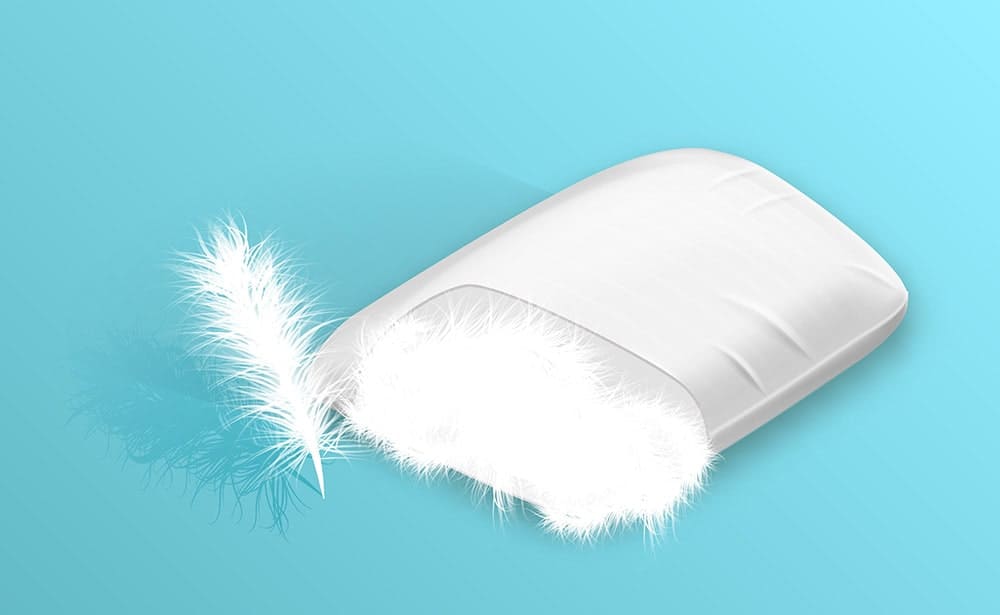
Feather pillow filling is another alternative to the down filling, crafted especially for those who cannot afford the luxurious and highly expensive pure down pillow. Feathers taken from the wings and back of the bird are used to make filling for your pillow. Similar to down, feather filling gives the pillow a moldable character, enabling it to adjust its shape according to your head and neck.
Since feathers are known to be less efficient at trapping heat as compared to down, feather filling therefore enables you to sleep cooler without making your pillow warm and uncomfortable, keeping night sweats at bay. A feather pillow however requires even more maintenance because the feathers can easily poke out of the pillow causing discomfort.
Moreover, the higher the number of feathers that escape from your pillow, the less likely it is to hold its shape. Feather pillow filling therefore requires regular fluffing to retain its malleability. Some people even complain about having to bear with an unpleasant odor characteristic of feathers. We have a detailed guide that explains what to consider when choosing between down pillows and feather pillows.
4. Polyester fiberfill
Similar to alternative down filling, polyester fiberfill is also a synthetic pillow stuffing option. However, it is produced to mimic the softness and look of cotton instead of down. Since polyester products are extremely cheap, such pillows are widely available in a larger variety of shapes and sizes.
Unlike its expensive counterparts, a polyester fiberfill pillow is extremely lightweight and washing machine friendly. That however comes with a significant cost to the environment, as it is allegedly reported that manufacture of polyester products contributes significantly to pollution by releasing toxins into the environment.
Polyester fiberfill pillows can be conveniently used by people with respiratory problems, thanks to its hypoallergenic properties. However, these too require significant maintenance since fiberfill tends to lose its shape very easily, the resulting pressure from which on the head and neck can cause pain.
Moreover, due to the lack of breathability of polyester fiberfill, you might find yourself sweaty and clammy upon waking up.
5. Buckwheat pillows
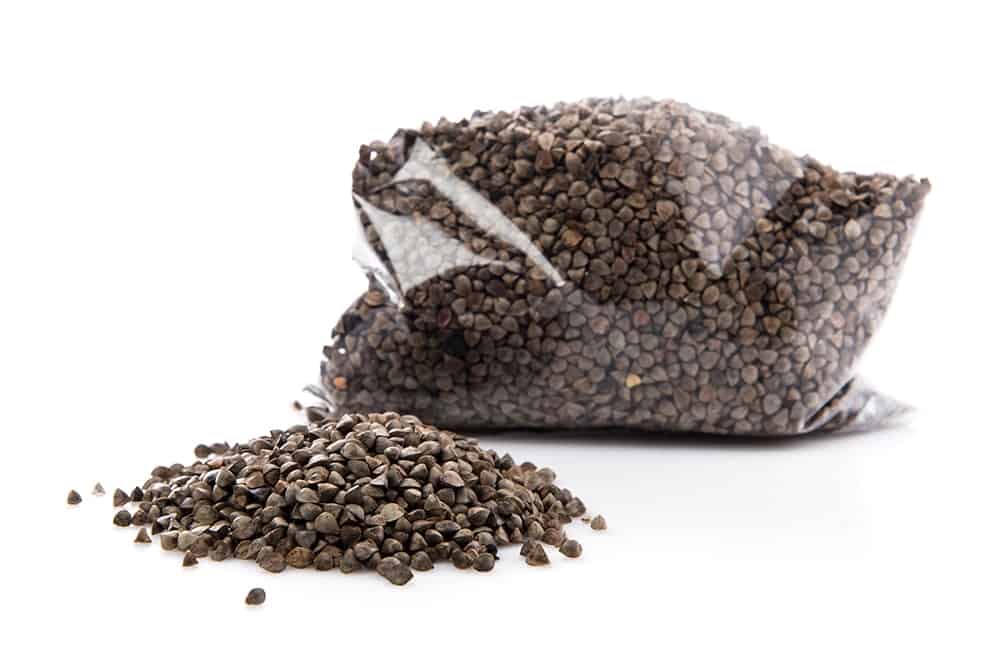
Does your bed partner snore a lot during sleep? Because if that is the case, a buckwheat pillow can easily solve the problem for you.
Made from kernels, these buckwheat pillows somewhat resemble the composition and feel of a beanbag. However they are most famous for their unique ability to offer unrivalled support to the neck and head, by conforming precisely to their shape. This superior support when coupled with high breathability, can help keep the airways clear and enable you to sleep snore-free.
Unlike the synthetic as well as other natural options, buckwheat filling is not only environment-friendly but also hypoallergenic and therefore highly consumer friendly.
However, buckwheat filling too comes with a few disadvantages, the most important one being the unusual weight which makes the pillow difficult to move around or cuddle with. Moreover, while most people suggest a significant reduction in neck pains following the use of buckwheat pillows, there are others who find it too rigid and are not comfortable with the rustling sound hulls make.
6. Memory foam
People who suffer from sleep apnea or recurring neck and shoulder pains often find memory foam pillows a life-saving option. This is attributed to the ability of memory foam to react to temperature and pressure changes which enables it to mold its shapes according to the contours of the person resting their head or neck on the pillow. Once set in a certain position, it can retain its shape providing firm support to the user.
Unlike most other softer pillow options, memory foam does not require maintenance in terms of regular fluffing, neither do they clump easily, which makes them highly durable and long lasting. However, cleaning memory foam pillows require special protocols.
Memory foam pillows last longer as compared to most of their synthetic counterparts. Their setback however is majorly attributed to the toxic chemicals and the resulting bad odor they emit during and post production.
Some other issues to consider with memory foam fillings include their high density and thus heavy weight, the ability to build up on the body heat and exorbitant cost.
7. Shredded Memory Foam
A shredded memory foam pillow is simply a variant of the traditional memory foam pillow, in which the foam is shredded into thousands of tiny chunks in contrast to the single big lump of foam used in the latter. This gives the pillow its malleable character, enabling the otherwise resilient foam to become more readily adjustable and breathable, while retaining its stiff character and offering unrelenting support.
Even when shredded, the memory foam does not require consistent fluffing. That is extremely favourable keeping in view how messy adding or removing the filling can turn out to be.
While shredded memory foam enables the readjustment process to become less time consuming than in the traditional memory foam, however, since the filling material is essentially the same, off gassing continues to become a major problem.
In addition to trapping heat and becoming uncomfortable later in night, a shredded memory foam pillow is not at all machine friendly and can take a long time to fully dry after a wash.
8. Latex filling
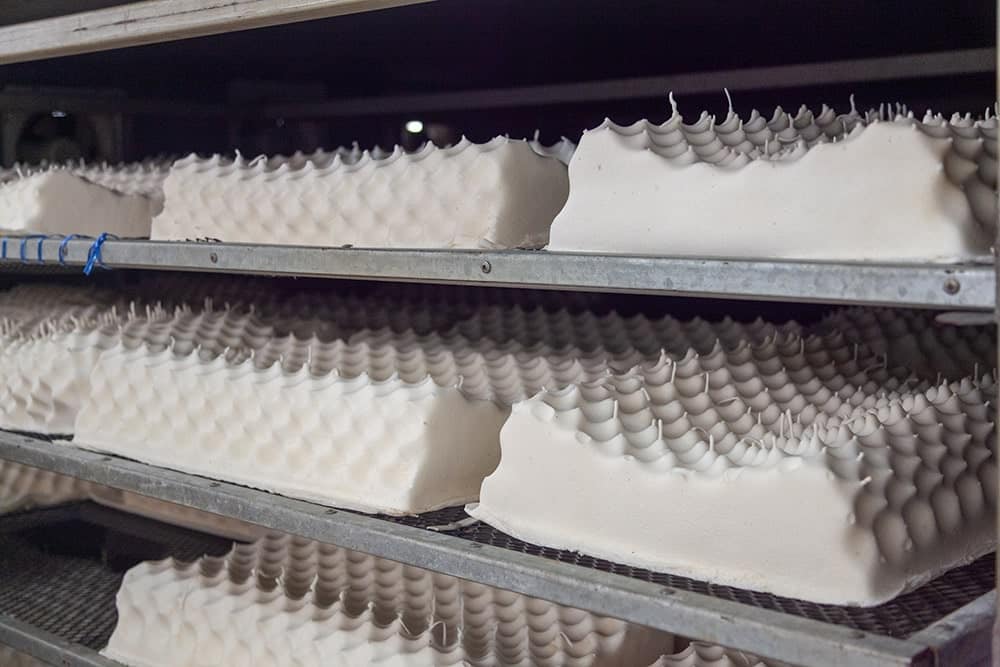
Latex is a sponge-like material extracted from a rubber tree and is widely used as a pillow filling material to produce highly resilient pillows that do not sink and mold their shape unlike most other options available. Since they can hold their shape for long, they can provide lasting support to the neck and head while ensuring longevity.
The sponginess of latex also enables the pillows to be highly breathable, thereby providing a cool and comfortable night’s sleep. This is one of the main reasons why people choose latex over memory foam pillows. Even though some people develop an allergy to latex itself, for most people with respiratory problems latex pillows are safe for use owing to latex’s natural resistance to dust mites and other allergens.
Since Latex pillows come in a solid box shape that is heavy and not moldable, opting for such a pillow will generally have you giving up on a cuddly and softer alternative. Moreover, latex emits a rubbery odor, which is what prevents most people from spending a large amount on buying latex pillows.
9. Microbead filling
The microbead fillings are actually synthetically manufactured polymer particles that strikingly share quite a few characteristics with the buckwheat fillings; though they are far less popular than the latter. These fillings are made up of thousands of bead-like particles that give the pillow its bean-like shape. When pressure is applied, the same beads shift within their case to give the pillow its malleable character and therefore provide sufficient support to the user’s neck and shoulders while they sleep.
On the other hand, these beads are terrible at retaining their shape, and so consumers might find themselves repositioning the pillow several times during the night. Since these microbeads are quite small, the overall weight of the pillow is generally quite low. They are also more breathable than their other counterparts.
However, any attempt to wash these fillings comes with a huge cost! In case the cover holding them gets torn during wash, these beads can potentially clog not only the washing machine but also the entire sewage system. Additionally, this pillow material has a very short lifespan and isn’t exactly as comfortable as it looks.
9. Kapok pillow filling
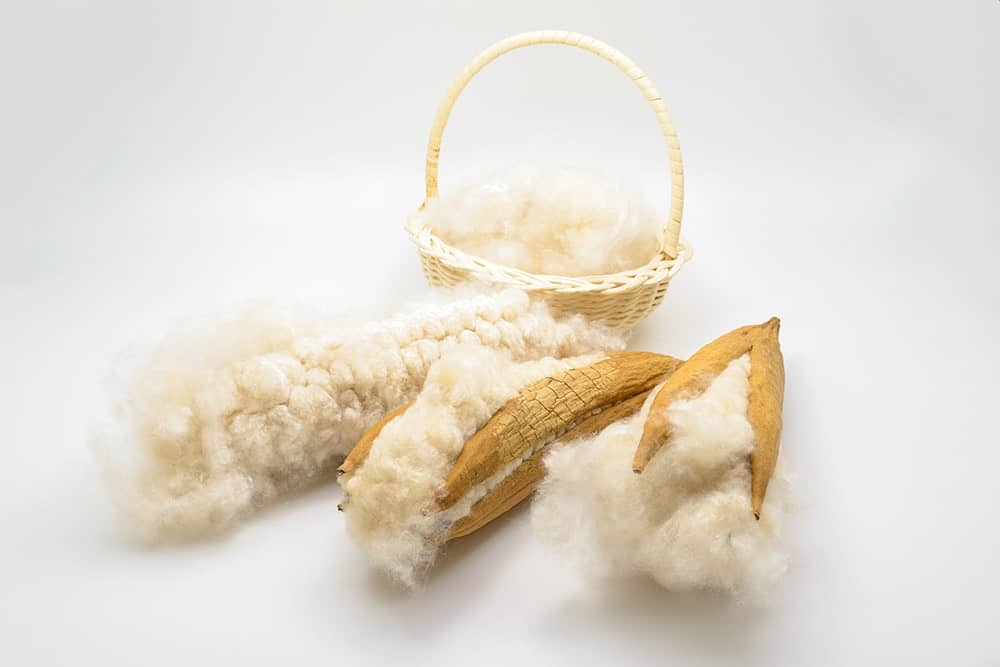
Kapok filling resembles down filling in terms of its extremely soft and malleable character as well as the natural method of extraction. However, unlike down, kapok filling comes from a Kapok tree fiber, instead of goose or duck and is therefore generally more appreciated.
Kapok is also used as an alternative to the polyester filling due to its non-toxic and biodegradable nature, in which it resembles buckwheat fillings. On the other hand, kapok filling even outsmarts buckwheat in terms of its lightweight and cuddle-friendliness.
Kapok is known for its inability to hold its shape for long, and this is often associated with its short lifespan, considering that it flattens with time. However, it can be easily revived by fluffing the pillow once in a while.
The major problem with kapok in fact is its highly flammable nature which puts your safety at risk along with the fact that it develops lumps over time which can cause discomfort.
10. Cotton pillow stuffing
One would think of cotton to be the most common type of filling material for a pillow. On the contrary, polyester and other synthetic counterparts have long since replaced the natural filling type by becoming the cheaper alternative. However, cotton fillings are still preferred by those who can pitch in some extra bucks for a safer and non-toxic pillow filling.
Cotton fillings, being natural, are also recommended to people who develop allergies against the synthetic ones. They are essentially odor free, thereby considerably more comfortable to use.
The most common problem identified with cotton fillings is their steady degradation over time. Cotton fails to retain its fluffiness and forms lumps instead which causes it to become hard. The hard filling therefore needs to be continually replaced with a supple one.
Even though cotton filled pillows are the easiest to maintain since they are machine friendly, they take a long time to dry and can also lose their shape after a few washes.
11. Water pillow filling
Being rather unconventional, water filled pillows are generally less known and mistaken as being something fancy yet purposeless. On the contrary, water filled pillows are highly effective pain relievers with an ability to provide unwavering support to your neck and shoulder throughout the night.
Water filled pillows generally comprise a reservoir covered with fiberfill wrapping. These reservoirs can be filled with the appropriate amount of water to make the pillow hard or soft, therefore enabling the pillow to become adjustable. The best part is, water based fillings require no fluffing and require only water for maintenance.
While water pillows are known to be ideal for all sleeping positions, the fear of a leak developing within your pillow and causing your mattress to get wet is real! Therefore, do not try to mold these pillows and cuddle them with force. Doing that will cause the thin fiberfill to burst and your pillow to empty its content on your bed! Being quite heavy, cuddling your water pillow is not really an option anyway.
So What is the Best Pillow Stuffing Material?
There’s no single best pillow stuffing that works for all. Since different people are allergic to different types of products and have varying preferences for sleeping comfortably, the best pillow filling is therefore highly variable.
Looking at it from a broader perspective and excluding the prospect of allergies, people who generally require softer pillows and do not complain of consistent neck or shoulder pains should generally opt for down pillows. Since these are expensive and difficult to afford, their cheaper counterparts such as the feather filled or synthetic ones can also be used.
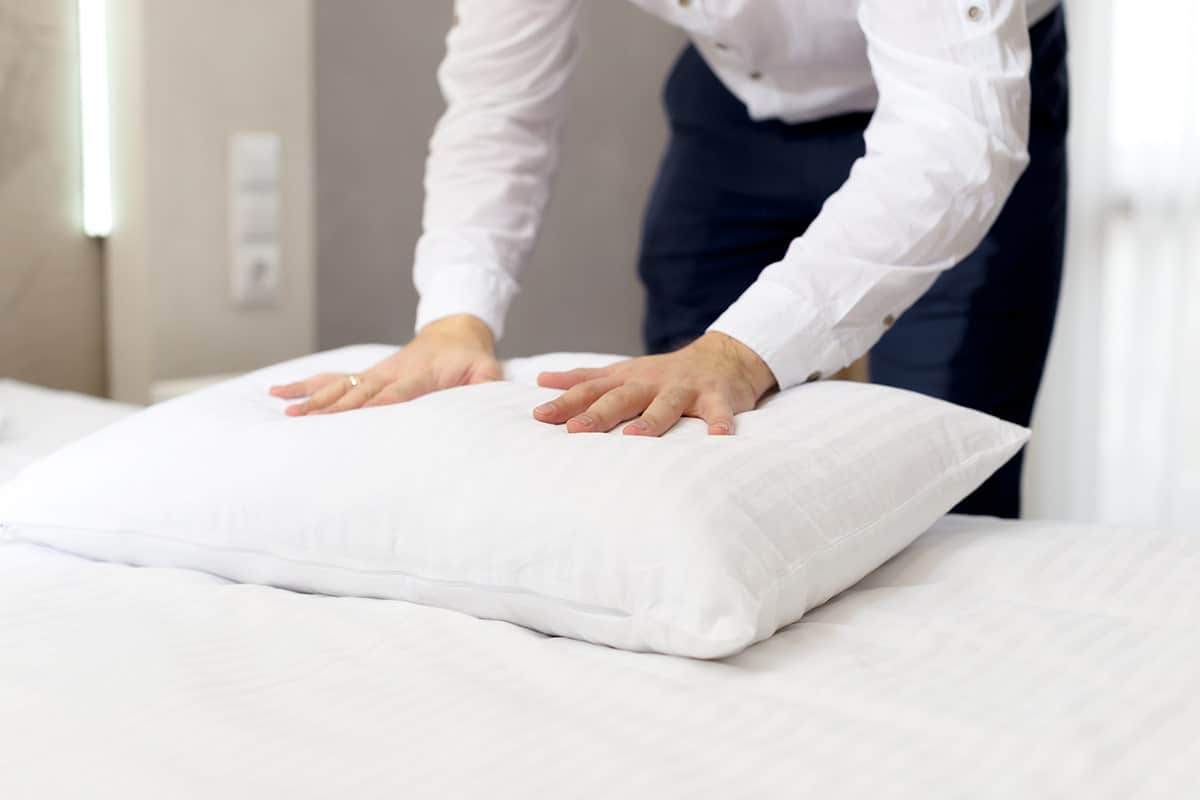
People who prefer stiffer pillows to support their neck and relieve existing pains should undoubtedly go for the buckwheat pillow filling. If the continuous rustling sound bothers you, opting for a water pillow filling instead can prove to be a good option as well.
Whichever pillow stuffing you ultimately choose, make sure to give it a try first before continuing long term use.
Frequently Asked Questions
Which pillow is better, microfiber or polyester?
Microfiber pillow, which is made of a very fine synthetic fiber, is a result of a newer and more sophisticated manufacturing technique, making it a better choice as compared to polyester. These pillows combine the breathability of cotton filling and the softness and longevity of down, to create a highly efficient pillow material. Polyester on the other hand is known for its gradual degradation and shorter lifespan.
How much polyfill do I need for a pillow?
The amount of polyfill you need depends on the size of your ideal pillow. A quick breakdown of various pillows sizes suggests that a 14″ x 14″ pillow requires around 0.6 lbs, 16″ x 16″ requires 0.8 lbs whereas an 18″ x 18″” pillow generally requires 1.0 lbs of polyfill.
How to stuff a pillow without lumps?
The best way to avoid lumps is to make an inner pillow from a lightweight batting, in addition to the outer fabric. Within this inner pillow, place the stuffing firmly. While doing so, ensure that the stuffing is blended together instead of forming individual clumps. Once done, sew the inner pillow and squeeze it until the fill inside is evenly distributed. Now place the inner pillow inside the outer shell to achieve an utterly smooth pillow.
How to stuff a pillow with polyfill?
Follow the steps:
- Take a handful of polyfill and gently remove the clumps by pulling the filling apart and fluffing it simultaneously.
- Now take a portion of this filling and start firmly stuffing it in the farthest corners of the pillow cover, whether it is the inner pillow batting, or the outer cover.
- After filling the corners, work your way towards the opening of your pillow case.
- During the process, make sure to keep a lookout for lumps. Add or take out the desired amount of fill to smoothen the lumps.
- Decide the amount of firmness you desire for your pillow and attempt to achieve it through the amount of stuffing you add.
- Once the filling is complete, gently sew the opening while smoothing out the area.
How much stuffing goes in a pillow?
The amount of stuffing you need for your pillow generally depends on your personal preference. If you prefer pillows with a harder feel, you would be needing more fill. On the contrary, for a softer and more supple effect, you would need your pillow to be less filled. The amount of filling is also dependent on the type of pillow material being used. On average, 3 pounds of fiber filling can easily stuff around 3 pillows of 18 x 18 dimensions.
